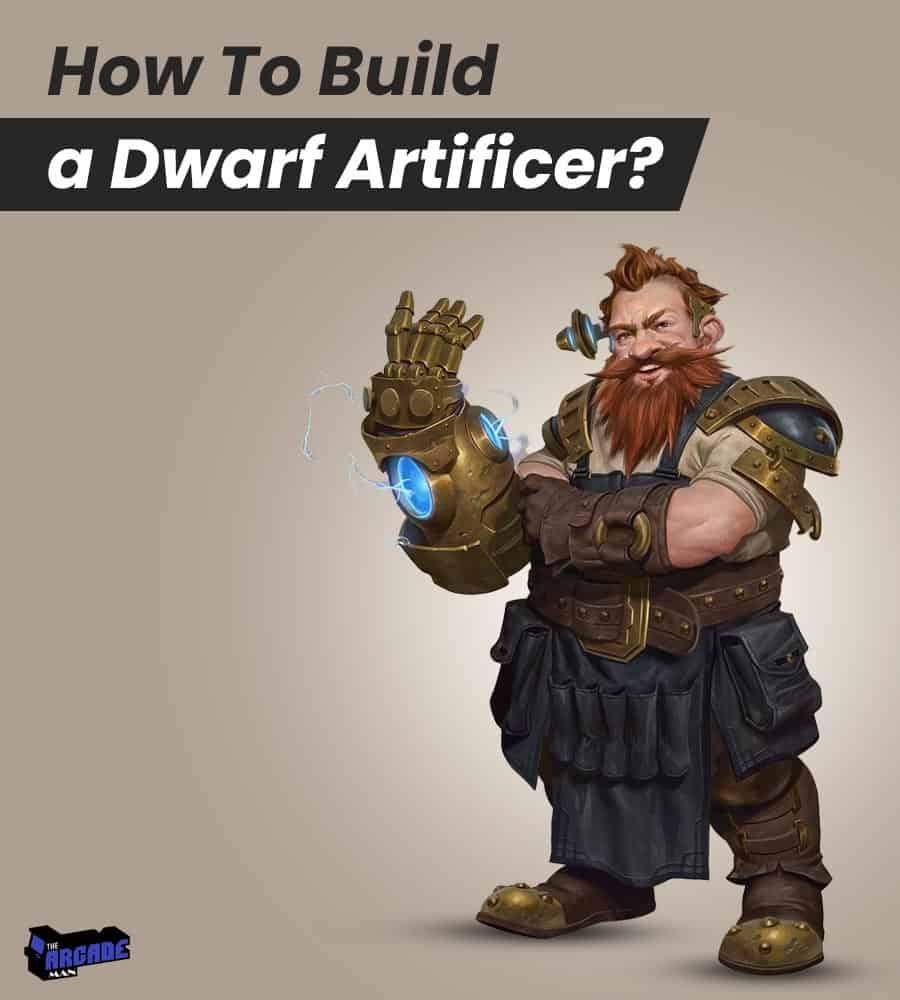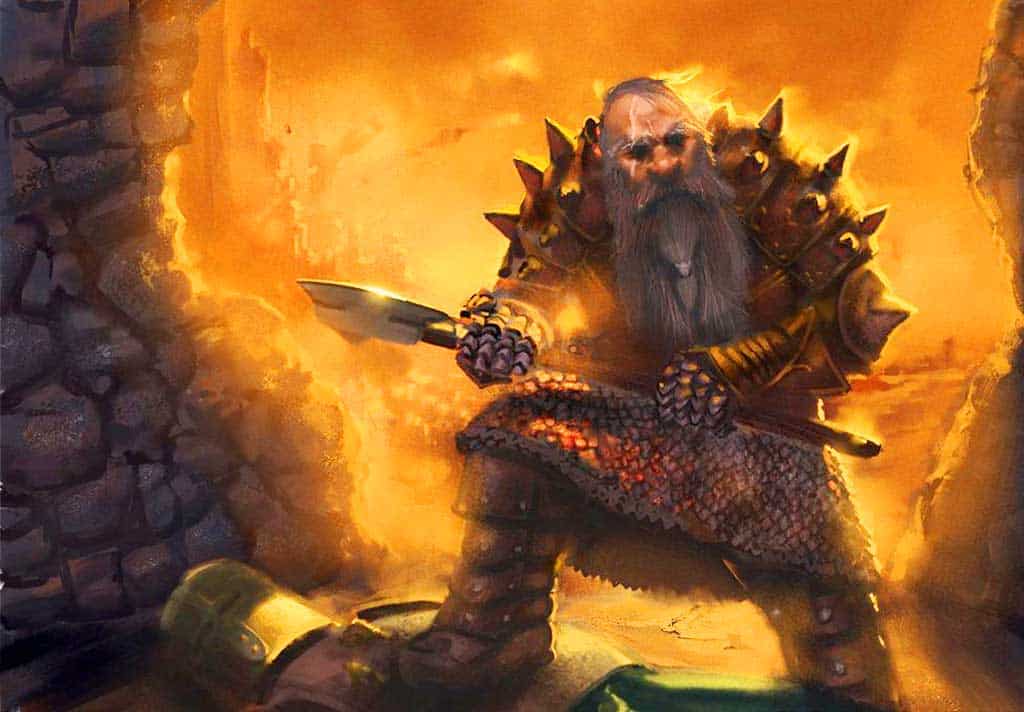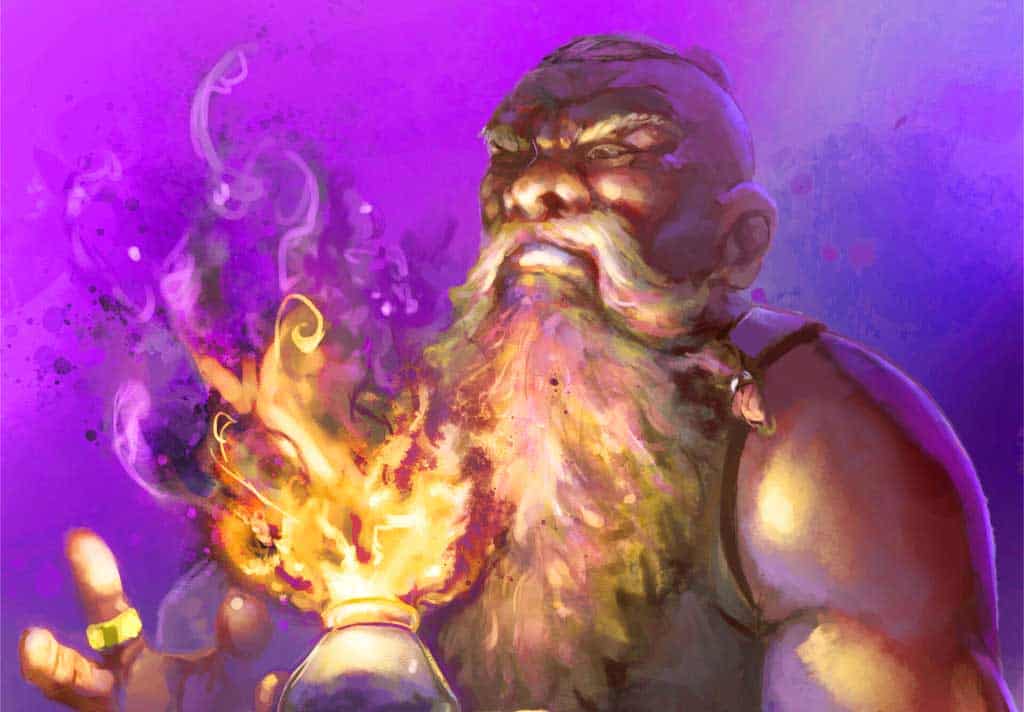Dwarf Artificer 5e | Guide To Dwarf Artificer

The cliche image of a dwarf portrays a short-statured person wielding a hammer or axe in their hand. First-time Dwarf players in Dungeons & Dragons 5e may envisage their dwarf as a miner, smith, or armorer with a bad attitude. If you’re making a dwarf artificer, you might want to “break” this stereotype. But how exactly?
When you roleplay as a dwarven artificer, you have the benefit of both your racial qualities and your class. Your dwarven ancestry and tool proficiency make you a formidable element of force. Continue reading to learn how to make the most of your dwarf artificer 5e.
How To Build A Dwarf Artificer 5e?

The Dwarf artificer subclass allows you to personalize your character in a unique way. For instance, since the game is set in a fantasy world, there won’t be many weapons for gun lovers. However, the positive news is that the Gunsmith subclass will turn you into an engineering specialist in-game.
You may follow the Alchemist route if you want to avoid being an engineer. This subclass resembles a scientist. You can make alchemical fire, smoke sticks, and other items.
Moreover, you’ll have the option to choose between mountain dwarf and hill dwarf subclasses. For a tougher and smart character, opt for the hill dwarf. If you favor strength and armor strength, go after the latter subclass.
One beneficial trick would be to place the highest roll under Intelligence when you roll your stats. It is the major source of spellcasting talents and skills for the Artificer.
The guild artisan background is ideal for an Artificer class since it naturally fits a class focusing on crafting. However, you are free to select various backdrops that will assist you in optimizing your talents and skills.
How To Play As A Dwarf Artificer 5e?
Since at least the 3rd edition, when the Artificer originally emerged as a class exclusive to the Eberron campaign setting, the Artificer has been a popular idea.
Consider Artificers to be the D&D equivalent of a Wizard mated with an engineer. This means you can utilize your Alchemist’s Satchel to deliver unexpected attacks in combat.
This class may be rewarding for players who appreciate “detail” and playing with their character’s build but can be punitive for those who don’t want to spend hours worrying over the distinctions between specific character possibilities.
How To Roleplay As A Dwarf Artificer?
As an artificer, the sky is the limit for you. Your knowledge of powerful spells and weaponry skills make you a deadly character.
Artificers are masters of invention who use their intellect and magic to unleash astonishing talents in items. They regard magic as a sophisticated system that must be decoded before it can be used in spells and inventions.
Kinnelen, for example, is fond of everything made of fire and metal. But she loves one thing more than the feel of polished metal: outshining her sister, Hilleken. Hilleken is a true talent.
Kinnelen needs to work four times as hard to compete with her sister’s efforts. Kinnelen’s day is always brighter when she shows off her latest greatest creation and sees Hilleken’s expression.
Specialist Dwarf Artificers
Artificer subclasses influence your position in the group, allowing you to play as a Defender or Striker ( battle smith), Support caster (Alchemist), or Blaster (Artillerist). While each Artificer may fulfill any of those jobs to some extent by modifying their spells and infusions, your subclass focuses on a certain function. It equips you with the tools to excel in that capacity.
1. Battle Smith

The Battlesmith primarily concentrates on Intelligence and Constitution, allowing you to excel in melee combat without worrying about Strength or Dexterity. The Steel Defender is a very easy pet, and the cost of it dying is low enough that you don’t have to feel awful about it, so you may hurl it in front of you and your teammates if things go scary.
The Battlesmith’s most difficult decision is what to do with his hands. Most characters only have two hands, which might be an issue if you intend to fight in combat. You could employ a two-handed weapon, but a shield is better than just d8-hit dice.
You could battle at range with a bow or crossbow, but the Artillerist is usually a superior option if you want to fight at range. The Battlesmith is designed to charge into combat with a weapon and so many Infusions that you’re practically invincible.
Remember that you can use any item infused with one of your infusions as a spellcasting focus, which means you can use it to provide both Material and Somatic components for spells that require inexpensive material components, and thanks to the “Tools Required” section of the Artificer’s Spellcasting feature, you don’t need a free hand to perform Somatic components as long as your weapon or shield is one of your Infused Items.
2. Alchemists

The Alchemist augments the Artificer with a variety of outstanding healing and support choices but does not fundamentally alter how the main class performs.
The Alchemist essentially carries a Healing Potion. Nothing flashy, but always handy. When you subsequently get Restorative Reagents, this might be an excellent choice because it both restores lost health points and gives a temporary hit point pad. This delivers the same amount of healing as casting Cure Wounds as a first-level spell.
You won’t be able to match a full caster’s healing power, like the Cleric ( read best cleric spells for more cleric spells) , but you’ll be able to cover those capabilities well enough to replace a cleric in most parties, and Experimental Elixir expands your magical options to help support and protect your allies with temporary elixirs that work like potions.
Moreover, give the elixir to an ally so they can use it on you, and if you gain Restorative Reagents, it becomes far more effective than anything a first-level spell slot could imitate.
You can also expend a spell slot to make an extra elixir, implying that they are 1st-level spells. Consider the free elixirs to be a pleasant surprise that may or may not be exactly what you require. Expect to spend spell slots on elixirs instead.
3. Artillerists

The Artillerist is every bit as amazing as the title suggests. They’re skilled at using magic to blow things up. Cannons allow you to strike foes as well as defend allies, and the Artillerist spell list offers a slew of wonderful new spells that tie with the subclass’s theme.
Artillerists don’t normally carve a lot of wood, but you can make arrows or crossbow bolts, five on short rest and 20 on a long rest. One might even argue that those figures indicate cutting up one or five javelins in the same time range. You may never use them, but your group may profit from the capacity to produce ammo.
The Artillerist’s spell set is mostly offensive, with some area control effects tossed in for good measure. None of the spells are on the Artificer spell list, which is unusual when compared to comparable class characteristics in other classes.
The Artillerist features a special and powerful pet, and the eldritch cannon is essentially a pet that can only do one thing. Due to its 15 ft. mobility speed, you’ll either manufacture a Tiny gun and carry it around or produce a new Small cannon anytime you require a cannon that can occupy a place.
Conclusion
The Dwarf artificer build 5e class has a tool for each work and a solution for any difficulty. They shine as Support characters, but they also make good Defenders, Healers, and Strikers. They can play practically any function in the party with the correct infusions and spells, making the Artificer’s flexibility match that of the Bard.
Several of the Artificer’s abilities are linked to making magical objects. You will miss out on those benefits if your game does not support item crafting or the usage of magic items. Of course, you may be the only supplier of magical stuff which could be useful.






